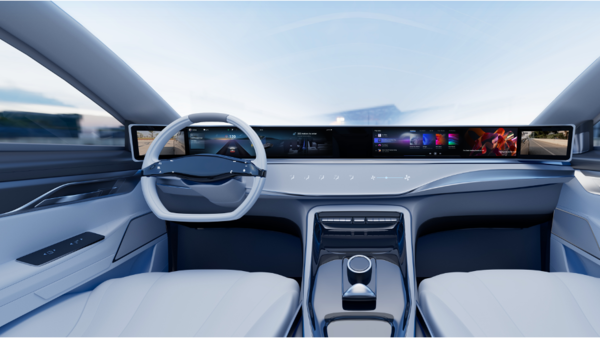Understanding context, answering follow-up questions, real interaction: The Large Language Model promises smart functions in the vehicle. In China, the technology is leading to impressive demand figures for smart cockpits.
What car companies have been promising for a long time, the "smart cockpit," is now becoming reality for the first time: with the "large language model," LLM. For some observers in China, it is the next technological leap in cars. For the first time, improved speech recognition makes it possible to take one's hands off the wheel more often. For others, it's just a lot of "hype" so far, and the industry is still in its infancy, they say.
In any case, more and more car manufacturers in China are integrating ChatGPT-like software into the cockpits of their models. One of the first early adopters was Changan Motors. The Chinese OEM began equipping its Yida sedan with "Ernie Bot," Baidu's version of ChatGPT, via software updates back in March of this year.
Where once only relatively primitive voice commands were possible, the driver now begins a conversation with a more intelligent assistant that understands context and can also respond to follow-up questions. The car is also beginning to proactively contact the driver when it needs maintenance.
Driving functions and on-board infotainment can be controlled by voice, gestures and with the help of facial recognition, and there is also "safety monitoring" for children. Not only Changan Motors, but also Geely, Great Wall Motor, Leapmotor, Jidu, Dongfeng Voyah, Hongqi, Dongfeng Nissan have now announced plans to offer Baidu's "Ernie Bot" in their cars.
LLM is more than a voice assistant
But LLM promises more than just upgrades to the voice assistant. Another potential application of artificial intelligence in cars is to better analyze various sensor data for driver assistance, or ADAS. LLM is being integrated with domain controllers for this purpose. Chinese AI company "SenseAuto" recently highlighted "multi-sensor fusion perception" for its latest cockpit product at IAA Mobility in Munich. Based on "SenseNova," the LLM developed by the company, it promises a "smarter decision-making system for the car's brain" under the heading of "safety."
So LLM not only changes driver-vehicle communication, making it more interactive and personal, but also promises to improve autonomous driving functions by making faster and better decisions.
The Large Language Model in vehicle production
The third new application scenario is the use of LLM in digitized production processes in car factories. While it is mainly LLM in the cockpit that has been making headlines so far, improving ADAS and production has also already attracted quite a few Chinese manufacturers. "A new era of intelligence is dawning for China's automotive industry," writes technology portal ITBEAR about the new trend. The intelligence of vehicles will finally become the core of future developments in the automotive industry through LLM, it adds.
Car manufacturers and AI software providers in China are currently experimenting with the new possibilities. Similar to the cooperation between Microsoft and Mercedes Benz for ChatGPT, they want to integrate "Large Language Models" with the smart cockpit and also domain control in cars as soon as possible.
Leading suppliers in this new industry in China include Pegatron and Quanta, the two Taiwanese contract manufacturers for Tesla. Among the suppliers from the People's Republic, Desay SV is currently the most successful. It supplies Li Auto, Chery and Neta, among others. The business of Chinese companies Megatronix, ECARX, Neusoft Auto Link and Huawei's car division is also growing at the moment.
Strong demand for smart cockpits
The new opportunities thanks to LLM are once again accelerating the adoption of smart cockpits in the Chinese auto industry. It is naturally most advanced in more expensive car models. But more and more affordable cars in China are now being upgraded with them as well.
In the first half of this year, the Smart Cockpit achieved a market penetration of 85 percent in new cars priced above 600,000 yuan, more than 77,000 euros, according to a recent study by the Gasgoo Automotive Research Institute. But even for less expensive cars priced below 300,000 yuan, under 39,000 euros, the Smart Cockpit has already captured 60 percent of all models. Overall, for all new cars, the market penetration for smart cockpits in China is currently just under 60 percent, while for central cockpit domain controllers it is 14 percent.
The high number of relatively young, technology-savvy drivers in China is ensuring that highly digitized cockpits are gradually becoming the standard in China. The Large Language Model has given this development another powerful boost since this year.


Follow us